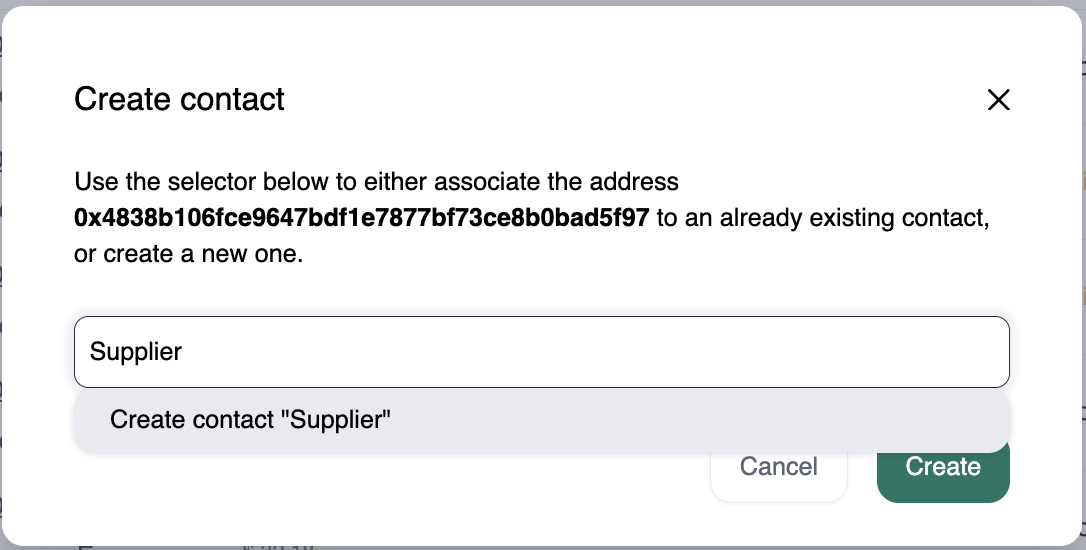How to manage and organize contacts in Cryptio
After importing your transaction data, the next step is organizing your contacts. This turns long blockchain addresses into recognizable names, making it easier to review transactions, generate reports, and prepare for labeling.
Understanding the Contacts System
The Contacts page shows:
All counterparties you transact with
Their incoming and outgoing transaction flows
Direct links to all transactions for each contact
Click the number in the Transactions column to see every transaction linked to that contact.
Three Ways to Identify Contacts
1. Bulk Import via CSV
Best for: Large contact lists or migrating from another system
Steps:
Go to the Contacts page → Import from CSV
Download and fill in Cryptio's CSV template
Add contact names, wallet addresses, and optional notes
Upload your completed CSV
Pro Tips:
Test with a small batch first
Use consistent naming (e.g., “Exchange - Coinbase”)
Keep a backup copy of your contacts
2. Unidentified Counterparties
Best for: Reviewing and naming unknown addresses
Steps:
Navigate to Business → Unidentified Counterparties
You can also download an Unidentified Counterparties report from the Reports module, and use this for your Contacts CSV.
Type a name for an address and confirm
For bulk updates, generate a CSV report, fill it in, and re-upload via Method 1
Features: Search, filter, sort by volume/value, and export unidentified addresses
3. From the Transactions Page
Best for: Quick fixes while reviewing transactions
Steps:
Open the Transactions page
Click an unidentified address
Enter a name and click Create contact (or assign to an existing one)
Advanced Contact Management
Multi-Address Grouping
You can group multiple addresses under one contact.
Example: Combine all employee wallets under Employees instead of creating separate contacts.
Steps:
Select an unidentified address
Assign it to an existing contact instead of creating a new one
Maintenance Best Practices
Monthly: Review new unidentified addresses, update business partner details
Quarterly: Reassess contact groups, audit high-volume contacts
Use consistent naming conventions (e.g., “Vendor - AWS”)
Archive inactive contacts to keep data clean
Troubleshooting
Import Issues
CSV errors → Check headers and formatting
Duplicate contacts → Merge manually
Incomplete addresses → Verify full string is included
Identification Issues
Address variations → Check for different formats (with/without prefixes)
Conflicts from integrations → Review logs and resolve manually
Recommended Workflow
Phase 1: Setup
Export contacts → Map to CSV template → Import in small batches → Verify updates
Phase 2: Clean Up Unknowns
Sort by largest transaction value → Name top addresses manually → Generate report for the rest
Phase 3: Ongoing Maintenance
Regularly review new addresses
Update internal transfers and key counterparties
Document processes for team consistency
